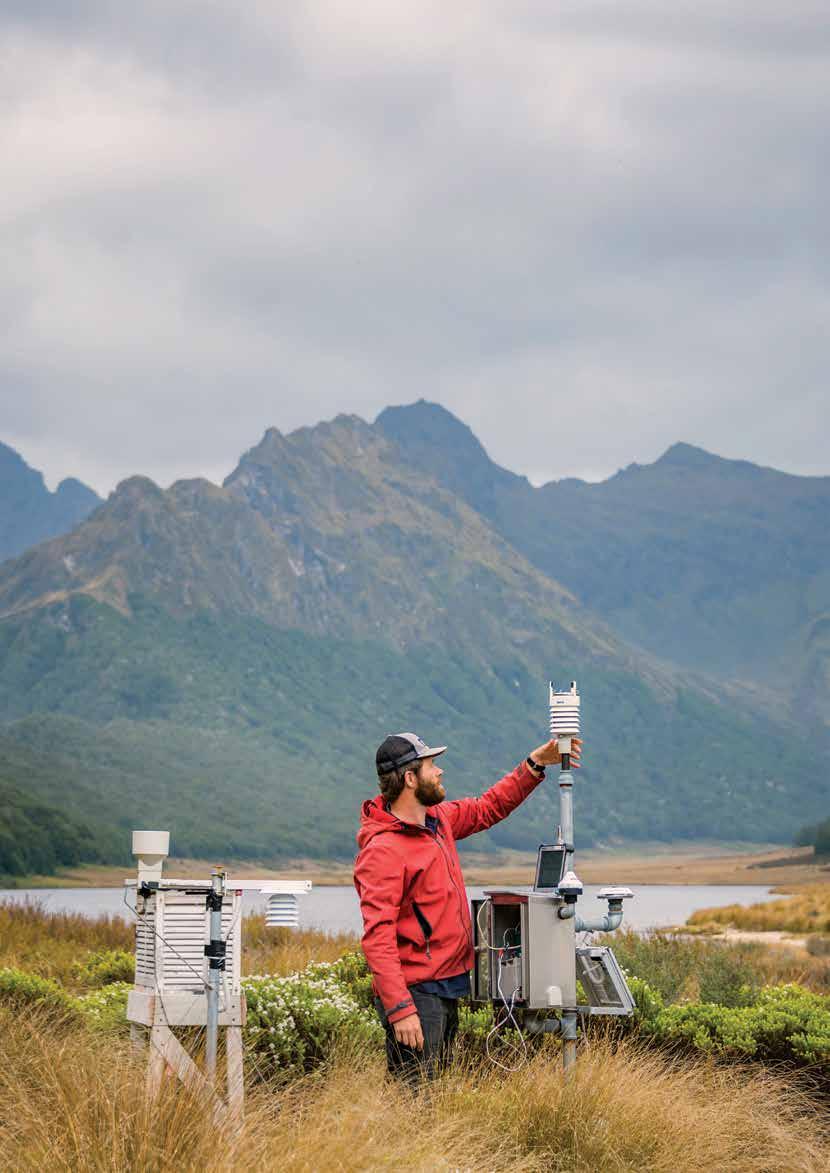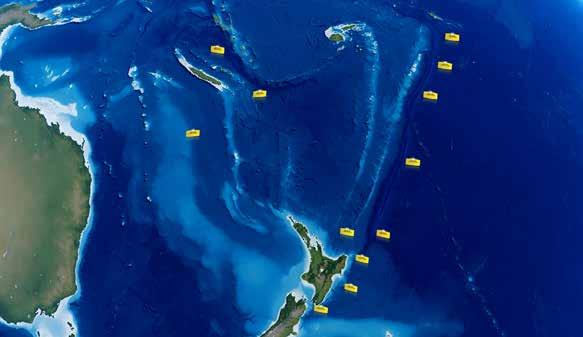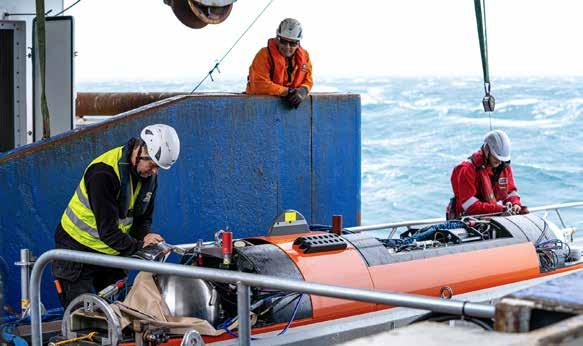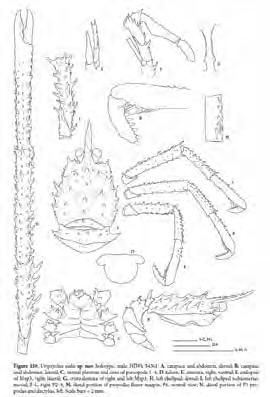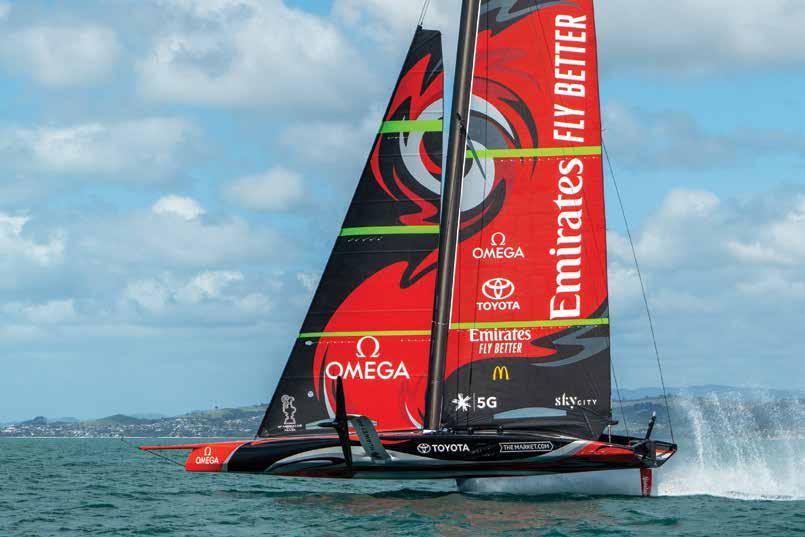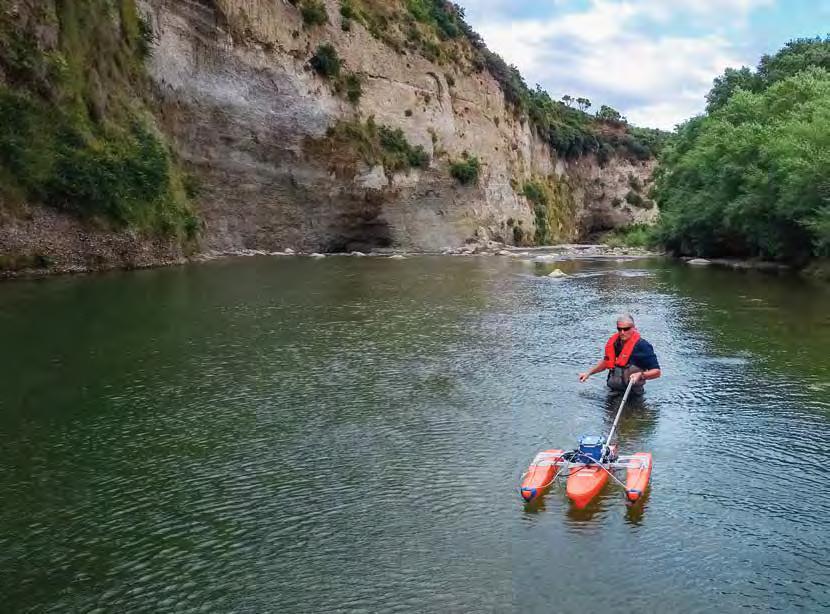SOLUTIONS
A job for the buoys Susan Pepperell looks at NIWA’s role in a new multi-agency tsunami warning network.
New Zealanders and Pacific Island communities are on their way to having the most advanced tsunami monitoring system in the world, thanks to a huge project that has required equal measures of collaboration and technical expertise. The project is led by the National Emergency Management Agency and involves a range of organisations, including the Ministry of Foreign Affairs and Trade, GNS Science and NIWA. To date, NIWA has assembled and deployed 8 out of an eventual network of 12 purpose-built tsunami detection buoys in the waters off New Zealand and north into the Pacific.
But it’s not just a matter of buying some buoys and dropping them into the ocean. Ensuring they are assembled correctly, working faultlessly and go in exactly the right place has been the responsibility of a NIWA team led by oceanographic engineer Mike Brewer. The DART buoys are fourth generation technology, manufactured in the US, and they arrive at NIWA in pieces. Brewer describes the assembly as “much like a giant Lego set”. “You put everything together and then put the units through some rigorous testing, so that when they’re deployed, we have complete faith in the system.”
The remote ocean buoys provide high-speed early warning of tsunami activity in our region, triggering alert systems for vulnerable coastal communities.
Each buoy comprises two main components – a Bottom Pressure Recorder (BPR) that sits on the sea floor, and a large, yellow float on the surface above.
Called DART (Deep-ocean Assessment and Reporting of Tsunami) buoys, the network marks a significant boost to New Zealand’s systems for monitoring, detecting and issuing warnings about tsunami threats.
Deploying both components requires a sophisticated mix of precision positioning on the high seas, sophisticated marine mapping below and a deep understanding of ocean currents. NIWA’s flagship research vessel Tangaroa and Brewer’s deployment team onboard are fully equipped to deliver.
“This will be the first time that we have a network of DART buoys close enough to New Zealand to give us advanced warning as to whether a tsunami is an hour away or many hours away,” says Sarah Stuart-Black, director of Civil Defence and Emergency Management.
A bathymetric survey of the seafloor using multibeam echosounders checks to ensure the gradient is less than 5 degrees, with no obstructions to interfere with signals travelling through the ocean.
The detection buoys will ensure early warning of tsunami generated along the Kermadec Trench or north west of New Zealand. (NIWA) 38 Water & Atmosphere
February 2021
www.niwa.co.nz


